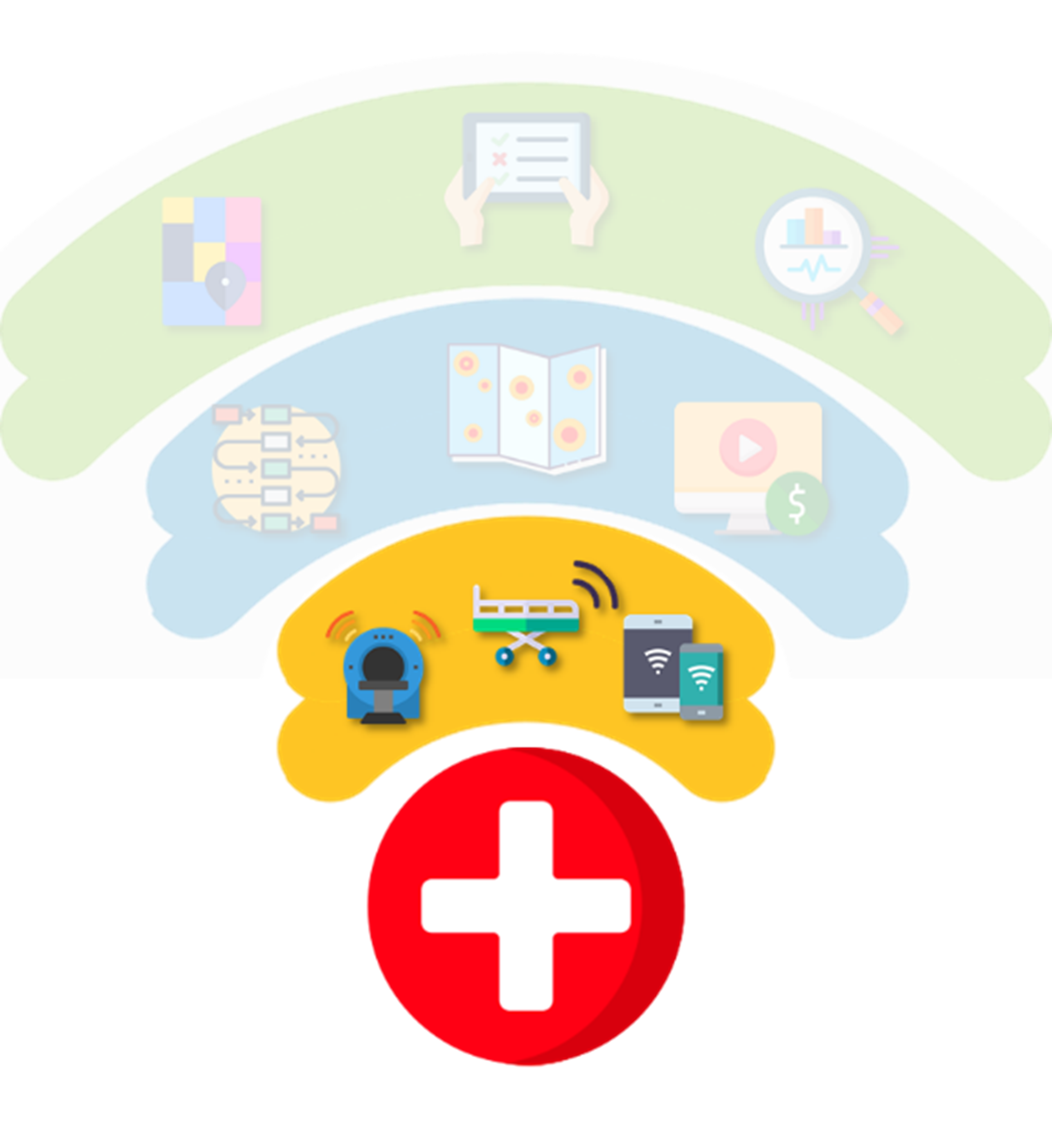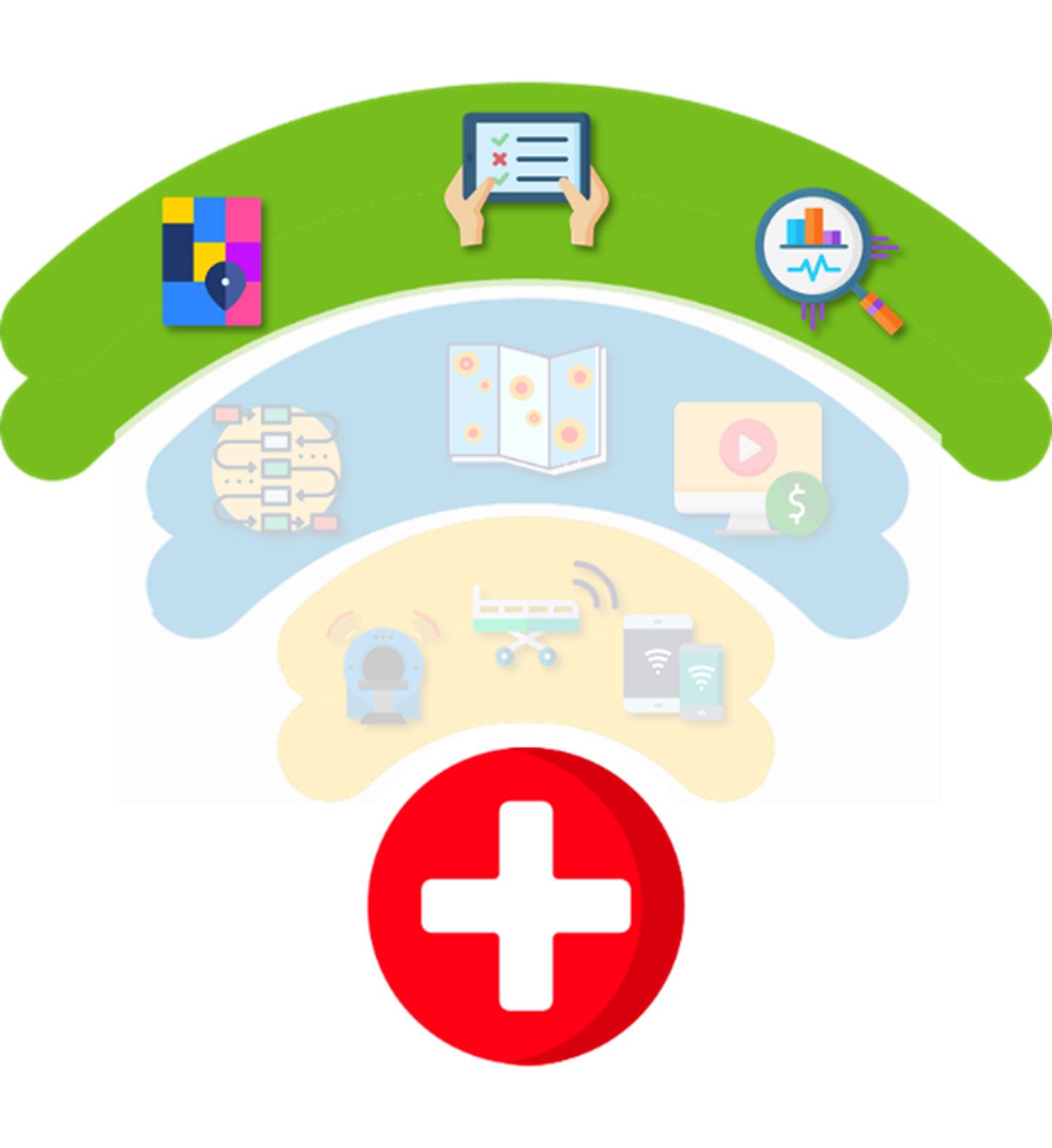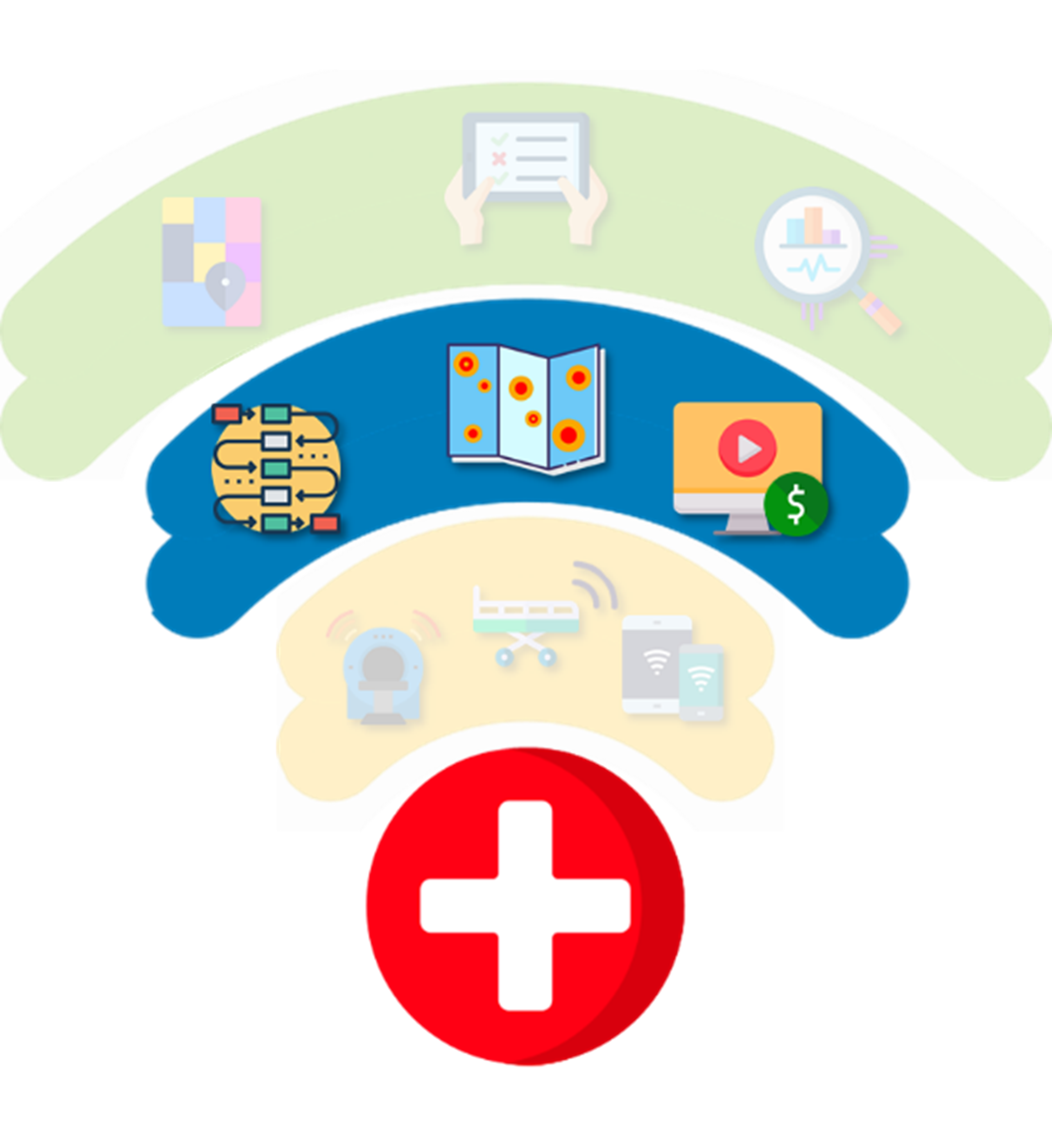Leveraging Wi-Fi in Healthcare
Hospitals, medical clinics and other healthcare facilities are increasingly using Wi-Fi to meet the growing connectivity demands of staff, patients and their families. Here’s why.
1. Operational Improvements
Improving patient care
Most hospitals, medical clinics, and doctors’ offices already provide separate Wi-Fi networks for medical staff and patients.

It has become increasingly common to see physicians and caregivers using Wi-Fi connected tablets and smart phones to record or access patient data, schedules, workflow applications and more. But healthcare has only just begun tapping into full potential of Wi-Fi connectivity.
“Wi-Fi offers the opportunity for remote monitoring of patients through portable devices, bringing clinical information directly to the relevant people. Where used, it dramatically reduces errors, saves time and increases efficiency.”
– Adlane Fellah, Maravedis
With IoT related healthcare device shipments slated to increase by 15% over the next five years, the concept of hospital of the future will soon be the hospital of today. Increased Wi-Fi usage is already improving patient care in a number of ways:
- By connecting smart medical and non-medical devices such as beds, monitoring devices and testing machines like MRI and X-ray equipment to backend systems that automatically updates patients’ electronic medical records.
- By enabling doctors and nurses carrying a tablet or other smart device to directly access a patient’s medical records from anywhere in the hospital. No more searching through paper files or trying to find an available computer to retrieve and enter medical information. This increases the productivity of medical staff, enabling them to be more informed and to provide patients with better overall care.
- By connecting digital signage placed strategically throughout the hospital to deliver relevant, real-time information to patients, visitors and hospital staff. Touchscreen check-in kiosks, detailed map diagrams, signage promoting products and services are just a few examples.
Freeing IT resources
Working with limited staffing and tight budgets is a familiar refrain for most healthcare IT teams, which are already burdened with the task of managing the proliferation of devices, security threats, new business requirements and technology lifecycles – not to mention the demands of other departments. The increasing complexity and rapid pace of change of new technologies and the proliferation of IoT devices only makes their job even harder.
Hospitals, clinics, and other healthcare facilities rarely have sufficient support resources to handle requests from a large number of Wi-Fi users. Like so many other businesses, hospitals are increasingly outsourcing the management of their Wi-Fi access and infrastructure to specialized service providers in order to remain focused on other strategic priorities and initiatives that will help provide patients with the best possible care.
Improving connectivity with Wi-Fi 6
The global pandemic has created an immense need for networks capable of supporting massive online activity with reliable performance. Wi-Fi 6 is the latest generation of Wi-Fi that allows hundreds or thousands of devices in one space to connect simultaneously without impacting network speed or experience.
Wi-Fi 6 is especially well suited to hospitals, which routinely experience heavy Wi-Fi use – but where network failure can have tragic consequences. Hospitals rely on medical devices to transmit accurate patient information from one department to another, or to provide real-time data analysis to attending doctors. Wi-Fi 6 can ensure these critical devices remain connected at all times.
In 2021, we can expect to see mass global adoption of Wi-Fi 6 across computers, tablets, smartphones, and IoT devices – with nearly 2 billion Wi-Fi 6 device shipments by the end of the year.
Tracking & monitoring medical equipment
Hospital administrators can use their Wi-Fi network to monitor and track medical equipment. By tagging a wheelchair or other mobile asset, administrators can always see where that specific equipment is located anywhere in the facility in real time. This information does more than simply prevent misplaced or stolen equipment. It also helps administrators understand how their hospital functions.
2. Patient Experience
Using wayfinding / indoor positioning systems
Hospitals are notoriously difficult to navigate. Larger hospitals with multiple buildings on sprawling campuses are even trickier.
Wayfinding technology uses Wi-Fi signals to make it easier for patients to find their way to the right parking lot, building, floor, room number and even desk to show up for their appointments on time. By simply eliminating this unnecessary stress for patients, these systems improve their hospital experience. They also save precious time for staff, who no longer need to stop what they’re doing to assist wayward patients.
Wi-Fi indoor positioning systems with location analytics go even further by providing hospital administrations with insights on how people actually move throughout the hospital. These tools let them see things like:
- Where people are located in each facility
- Where they tend to gather at different times of day
- How long it takes them to move from one location to another
- Average dwell time for specific locations
Administrators can use this data to calculate wait times, improve resource allocation, optimize traffic flows, and more.
Generating new revenue streams
Even though a hospital room may have a TV and phone, the average patient has become accustomed to enjoying seamless Internet access on their portable devices. Hospital administrators know that patients are willing to pay for reliable Wi-Fi so that they can stay connected to the outside world – whether it’s chatting with friends and family on social media or accessing entertainment like they do at home.
Hospitals that are able to provide patients with seamless Wi-Fi access can generate new revenue streams and improve the overall patient experience by:
- Offering different tiers of Wi-Fi speed and charging accordingly
- Inviting Wi-Fi users to donate to charitable foundations in exchange for internet access
- Offering entertainment as a service
3. Insights for a Healthier Population in a COVID Setting

Pre-COVID forecasts called for the healthcare data analytics market to grow to $68 billion by 2020. If anything, the global pandemic has only made real-time data collection and analysis more vital. Here’s how Wi-Fi is helping hospitals predict, prepare and respond in a proactive and coordinated manner:
Location analytics and occupancy metrics
Allows hospitals to track and measure traffic flows, dwell times and occupancy levels for various areas/zones in real time. This information is being used to curb the spread of the virus in a number of ways, such as by identifying high use/traffic areas that need to be prioritized for more frequent and thorough cleaning.
COVID tracking and follow-ups (through tools like Presence Engage)
Allows hospitals to automatically collect patient information and even engage with them following a hospital visit, such as by asking them to complete a questionnaire on whether or not they’re experiencing symptoms, or to inform them that they have tested positive for COVID.
Wireless Connectivity for the Hospitals of the Future
As hospitals increasingly use Wi-Fi to connect patients, healthcare professionals, sensors, computers and medical devices, they are able to achieve what, until now, has been mostly impossible: Offering state-of-the-art healthcare services to each patient, regardless of limited resources and physical hospital boundaries.
Learn more about how Datavalet’s Wi-Fi for healthcare facilities can help you improve your patient experience, boost operational efficiency and monetize your Wi-Fi.
Find Out More in Our Blog about Healthcare WiFi
We love sharing our knowledge and inspire businesses to take a step towards our solutions.

Datavalet provides high-speed Wi-Fi network management to guest and staff across your business. We can transform Wi-Fi from commodity to business value.
